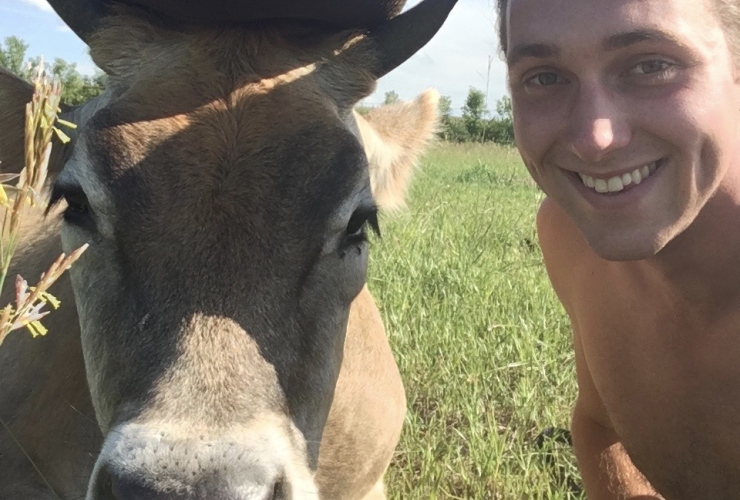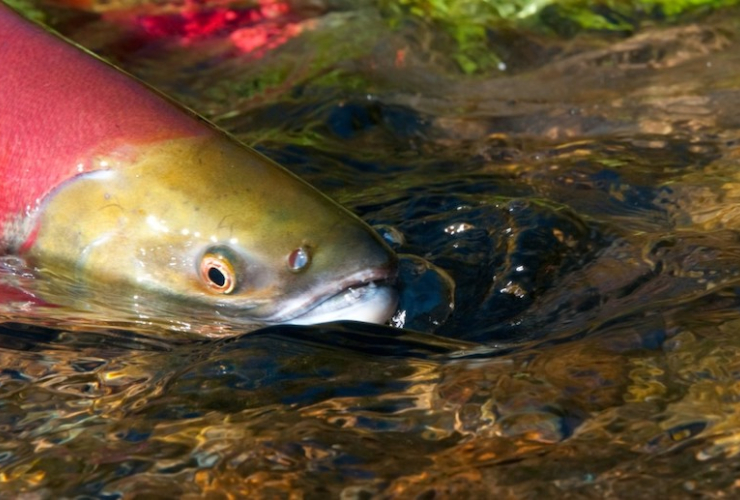In life, Betty Swift protected the plants and animals she treasured on her 52-acre private island in the Salish Sea that served as an oasis for some of B.C.’s rarest species and ecosystems.
At the end of her days, Swift and her children ensured that protection would continue in perpetuity by gifting Link Island to the Islands Trust Conservancy (ITC).
“It was very moving to work with the family through the process,” said Kate Emmings, ITC manager.
“There was a lot of love for each other, and a lot of love for the land, and they were really united around this final gift of nature.”
Island is a rare hot spot of biodiversity

It’s extremely unusual for an entire island — especially an undeveloped one in the rarest ecological area of the province — to be donated as a conservancy, Emmings said.
The new reserve, nestled between Mudge and DeCourcy islands, falls into the Coastal Douglas-fir (CDF) Biogeoclimatic Zone, she said.
The CDF zone — a narrow strip of southeast Vancouver Island, the Gulf Islands, and B.C’s southwest coast — is the smallest and most at-risk of the province's 16 zones. The unique ecosystems in this zone and wealth of biodiversity aren’t found anywhere else in Canada, Emmings said.
Nearly 300 species are listed as at risk of extinction in the region, representing one-quarter of B.C.’s rarest species, she added.
Link Island is located in a populated region where most of the land base is privately owned and not necessarily managed to protect environmental value.
However, the island is a near-pristine trove of biodiversity, with three kilometres of undeveloped shoreline, coastal cliffs, wetlands, tidal flats and mixed forest featuring threatened coastal Douglas fir, Arbutus and prairie oak meadows, Emmings said.
An avid naturalist, Swift wanted the land and animals the family loves to have the best chance of survival and recovery as the climate crisis advances, she added.
The island will remain closed to the public to harbour threatened species vulnerable to human disturbance, including the western screech-owl, barn swallow, and great blue heron.
But Swift ensured the land would be managed to protect its ecological and cultural values with the conservancy, Emmings said.
Environmental monitoring will continue to prevent the spread of invasive species, or perhaps maintain and create good nesting cavities in trees favoured by screech owls.
ITC is starting to reach out to First Nations whose territories and interests include Link Island to shape a management plan, now in its initial stages, Emmings said.
First Nations have inhabited the Gulf Islands for millennia and the conservancy wants input and guidance on areas that are special and sacred, she said. Ultimately, it is hoped First Nations will actively participate in the stewardship of the island.
May become a bastion for climate science

The Swift family also dreams Link Island will become a nexus for climate change research in the Salish Sea.
It’s a fantastic opportunity to establish relationships with research or university institutions specializing in climate science, especially since the island features so many different ecosystems, Emmings said. Research could involve monitoring precipitation and temperature changes or what animals, plants, or habitats wax or wane with climate change.
Sea level rise could also impact birds that rely on the island’s shoreline habitat, she added.
For example, pigeon guillemots, an elegant black seabird with bright red legs and mouth and white slashes on its wings, nests in rock crevices on the island’s shores and relies on nearby waters for food.
“We’re really curious as climate change occurs about how we work with the landscape to make sure there are thriving ecosystems,” Emmings said.
Gift reflects a generational commitment to nature
The Link Island Nature Reserve was generations in the making, said Swift’s daughter Barbara Swift.
Valuing land and ecosystems conservation is embedded across multiple generations of the family, and that focus is more pronounced as global warming advances, she said.
Her parents purchased Link Island in the early 1960s with conservancy being the end goal, she said.
“There was a commitment to keep it as a natural place and not develop it.”
The assessment value of Link Island is $3.7 million, according to ITC.
But for the family, the island’s wealth doesn’t lay in monetary value, but what if it offers in protecting biodiversity and mitigating climate change. It also provides the opportunity for ecosystems to simply exist, Barbara said, something her mother felt was important.
“There’s a western notion of land ownership ... tied to extractive strategies and its use in service of humans,” she said.
“If I were to ask my brother and sister, I think that’s something we would all see as being somewhat problematic.”
The family also wanted Link Island to become part of a larger conservancy network, such as ITC, Barbara said.
“We fundamentally believe we can all do so much more together than (as) individuals,” she said.
“So this is very exciting for us.”
Rochelle Baker / Local Journalism Initiative / Canada’s National Observer
This is wonderful,
This is wonderful, heartwarming news. Thank you to Betty Swift and family for your generosity!
And foresight!
And foresight!
The 1960s were before almost anyone was concerned about The Environment, and I think few, if any, had even heard the term biodiversity.






Comments